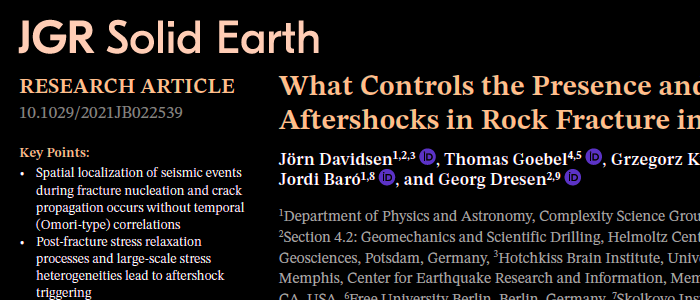Together with colleagues from Canada, Spain and Russia we finally published a manuscript entitled “What Controls the Presence and Characteristics of Aftershocks in Rock Fracture in the Lab?” in Journal of Geophysical Research: Solid Earth. The key points of the manuscript can be summarized as follows:
- Spatial localization of seismic events during macroscopic fracture nucleation as well as during actual crack propagation occurs without temporal (Omori-type) correlations.
- Post-fracture stress relaxation processes and large-scale stress heterogeneities lead to aftershock triggering.
- Compaction and double-couple events, as estimated using full moment tensor inversion of acoustic emission events, play a dominant role for aftershock triggering in the lab.
Reference:
Davidsen, J., T. Goebel, G. Kwiatek, S. Stanchits, J. Baró, and G. Dresen (2021). What Controls the Presence and Characteristics of Aftershocks in Rock Fracture in the Lab? Journal of Geophysical Research: Solid Earth 126, e2021JB022539, DOI: 10.1029/2021JB022539. [ Article Page ] [ Link to associated data publication ]
